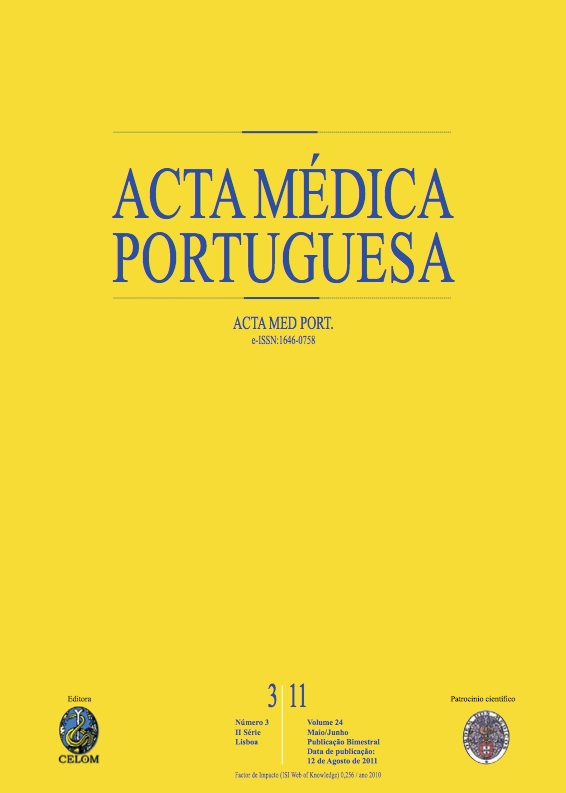Musculoskeletal pain: a case of disease HbSC/alpha-thalassemia.
DOI:
https://doi.org/10.20344/amp.455Abstract
Sickle cell disease is an inherited chronic haemolytic anaemia whose clinical manifestations arise from the tendency of the haemoglobin to polymerize and deform red blood cells into the characteristic sickle shape (HbS), with vaso-occlusive phenomena, pain and organ damage. Sickle cell anaemia, the prototype disease, is the homozygous state and represents the most severe form of sickle cell disease. A variety of other sickle cell syndromes are a result of an interaction between HbS and certain variant haemoglobins as HbC and thalassemia. We describe the case of a 28-year-old, black man, with recurrent episodes of musculoskeletal pain. Physical examination revealed spenomegaly. Laboratory tests showed haemolytic anemia and microcytosis. The peripheral blood smear revealed frequent target cells. The high performance liquid chromatography (HPLC) detected the absence of HbA, increased HbA2 and the presence of HbS and HbC, in equal amounts. In this case, we want to draw attention to less common and non-rheumatic causes of musculoskeletal pain as well as alert to the importance of early diagnosis of sickle cell disease that can minimize and prevent many of its complications.Downloads
Downloads
How to Cite
Issue
Section
License
All the articles published in the AMP are open access and comply with the requirements of funding agencies or academic institutions. The AMP is governed by the terms of the Creative Commons ‘Attribution – Non-Commercial Use - (CC-BY-NC)’ license, regarding the use by third parties.
It is the author’s responsibility to obtain approval for the reproduction of figures, tables, etc. from other publications.
Upon acceptance of an article for publication, the authors will be asked to complete the ICMJE “Copyright Liability and Copyright Sharing Statement “(http://www.actamedicaportuguesa.com/info/AMP-NormasPublicacao.pdf) and the “Declaration of Potential Conflicts of Interest” (http:// www.icmje.org/conflicts-of-interest). An e-mail will be sent to the corresponding author to acknowledge receipt of the manuscript.
After publication, the authors are authorised to make their articles available in repositories of their institutions of origin, as long as they always mention where they were published and according to the Creative Commons license.









